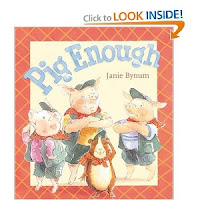Cheng, Andrea. 2003. THE KEY COLLECTION. Ill. by Yangsook Choi. New York: Henry Holt and Company. ISBN 0805071539 [Suggested Grade Levels 2-6]
SUMMARY and ANALYSIS
Revealing the warm and attractive relationship of a Chinese family living in Cincinnati, Ohio, striving to maintain their Chinese heritage is a heartwarming story told of a little boy who loves and admires his grandmother, lovingly referred to as Ni Ni. In this story the reader sees this charming relationship unfold as they spend enjoyable time together cooking and eating authentic Chinese Jiao Zi, learning Chinese characters, or passing the time by sharing stories spurred on by Ni Ni’s key collection. Then the day comes when it is time for Ni Ni to move across the country to California to be near her daughter, who is a doctor, and better suited to help now that she is growing older. Xiao Jimmy deals with the sadness of loosing his beloved grandmother, friend, and next-door neighbor as they prepare for her move. He will miss waking up in the middle of the night and seeing her light on next door, and he wonders when he will get to see her again.
Delightfully introducing and discussing wonderful aspects of Chinese Culture and poignant racial issues, this book is a must have for all. It also wonderfully encases the beauty of the Asian accent. Such an example is when Ni Ni is sharing a story about her son in China and says, “Ming cannot until I find key under the rug and set him free… What he think, we leave him starve in there?” Much of the story and the relationships in it seem very familiar to circumstances in many families. One will enjoy comparing the relationships described here to those of their own family.
CONNECTIONS
This is a great story exemplifying foreshadowing as well as for teaching students to predict the plot. Open a discussion on foreshadowing and teach skills using illustrations and key words to predict what will happen. One example is the picture opposite the title page, an illustration of a little boy looking into a mailbox.
Lead a discussion about the way we, as a society, treat foreigners and use examples from the story such as Jason’s interaction with Ni Ni on page 38 and 39.The text is very informative giving students understanding about such terms as leap year, the Chinese calendar and Chinese culture. Examples of Chinese culture are mentioned all through the book and could be a great source for further investigation on the internet, possibly on the Great Wall of China or the Chinese characters.
RELATED BOOKS
Other multicultural books related to this one:
Colon, Raul. WALKING TO THE BUS-RIDER BLUES. ISBN 0689838867
Park, Linda Sue. THE KITE FIGHTERS. ISBN 0395940419
By Kristi Mays









